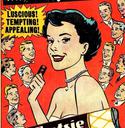Donna Freitas,
The End of Sex: How Hookup Culture Is Leaving a Generation Unhappy, Sexually Unfulfilled, and Confused About Intimacy
(Basic Books, 2013).
Miriam Grossman,
Unprotected: A Campus Psychiatrist Reveals How Political Correctness in Her Profession Endangers Every Student
(Sentinel HC, 2006).
On a university campus, the ethos of the place is a teacher of its own. From the ways in which students habitually interact with one another, and more subtly, from the opportunities and resources that a school provides its students, students learn what passes for acceptable and good. If, for example, a university puts recycling bins in all the classrooms and dorms or gives students free access to gyms open from dawn to midnight, it communicates that recycling and exercising are good practices. Universities “teach” about men and women and sex, too, according to books authored by Dr. Donna Freitas and Dr. Miriam Grossman. Among their many observations, both authors contend that the “sex as recreation” narrative has overtaken the campus social scene, and that such a culture has made it harder for students to recognize and appreciate the authentic differences between the sexes.
In The End of Sex: How Hookup Culture Is Leaving a Generation Unhappy, Sexually Unfulfilled, and Confused About Intimacy, Dr. Freitas discusses trends in college students’ attitudes towards sex, romance, hookup culture, and dating. Freitas discovered these by conducting interviews with more than 2,500 students at seven colleges and universities in 2006. She concludes that students today are learning how to relate to one another romantically (or unromantically, as the case may be) amidst a hookup culture. By this she means a culture where casual, no-strings-attached sex, otherwise known as “hooking up,” is the norm, and where dating, to all appearances, has disappeared. Freitas writes early on that “[hookup culture] is the defining aspect of social life on many campuses; to reject it is to relegate oneself to the sidelines of college experience” (5).
What does such an environment teach students about masculinity, femininity and relationships? Freitas devotes two chapters to this question. She observes that the ubiquity of college theme parties—such as, “Maids and Millionaires” or “CEOs and Secretaries” (81)—encourages women to objectify themselves and to make themselves “powerless, submissive, and, most of all, dependent on [a man] for something” (77). Men feel pressured to exude machismo, scorn any interest in commitment or romance, and demonstrate a single-minded interest in hooking up (104‒06). However, despite this campus culture, in their interviews with Freitas many students expressed misgivings about casual sex, as well as the narrow and absurd conceptions of masculinity and femininity that were integral to hookup culture. The men knew there was far more to their female peers than their short skirts revealed, and women understood that men had a far greater capacity for thoughtfulness and compassion than the latter thought they were permitted to show. Still, there is a discrepancy between what students think and what they do. Freitas notes that female students embrace parodies of femininity thinking they will bring them freedom (92). In this way, their beliefs and actions contradict the conclusions of earlier feminists (91). Similarly, men come to understand that they should resist giving signals that they want a steady relationship. Freitas describes a pervasive notion on college campuses that “[r]elationships restrict freedom―they require more care, upkeep, and time than anyone can afford to give during this exciting period between adolescence and adulthood . . . Hookups allow students to get sex onto the college CV without adding any additional burdens, ensuring that they don’t miss out on the all-American, crazy college experience they feel they must have. They can always settle down later” (1‒2). In other words, in a hookup culture, freedom means freedom from relationships; as Freitas writes, students are “‘free’ to forget about love, meaning, and commitment, and ‘liberated’ to have sex without any strings, ‘keeping [themselves] at a distance’ from partners, and turning to friends for a reality check if they think they might be ‘getting too attached’” (62). Students are thus burdened with the task of finding fulfillment outside of age-old means of giving life its richness—love, relationships, and communion with others.
The hookup scene is troubling to Freitas not only because of the way it distorts notions of masculinity and femininity, but also because it diminishes the respect students have for themselves and for one another, and because it encourages the separation of love, intimacy, and sacrifice. Freitas noticed that the students who talked the most about their sexual experiences “were the students who also sounded like they were discussing household chores” (12). However, many students were not so detached: when Freitas asked her interview participants to reflect on their hookups, she noted that, “ . . . the most common of all among the respondents were the 41 percent of students who expressed sadness and even despair about hooking up . . . hooking up made students feel ‘miserable’ and ‘abused’ . . .” (12). These students felt used and had difficulty learning how to separate their emotions from sex in order to treat it like an exercise routine or pastime rather than the gifting of their whole self to another person. Freitas submits that “[m]en and women learn to shut down emotionally in order to ‘safely’ turn on physically . . . Participants train themselves to erase (or at least try to erase) any trace of emotional intimacy, so that they can prevent attachment arising from a sexual encounter” (30).
Freitas captures well the quandary that students are in: they are rightfully opposed to a campus culture that encourages women to subjugate themselves and men to suppress their sensitivity, but they still give in to hookup culture because it is efficient and ubiquitous. Freitas is also nuanced in her portrayal of college students, something that should be noted given the prevalence of analyses of hookup culture which portray the majority of college students as mindless drones looking for sex. She introduces readers to the students who enjoy hooking up, the ones who feel conflicted about it, and the ones who, looking for love, are sorely disappointed and hurt by it.
While Freitas focuses on what passes for “normal” in student culture, Dr. Miriam Grossman―a former member of UCLA’s Student Counseling Services and author of Unprotected―denounces the health myths that circulate at college counseling offices. Dr. Grossman writes, “In their efforts to educate students, campus health and counseling centers lump men and women together. This is inaccurate in the extreme” (28). She notes how students are inundated with information about the importance of healthy eating, exercise, and avoiding tobacco and alcohol, but are deprived of basic information when it comes to questions about sex, STDs, abortion, and fertility. She maintains that campus counselors withhold information that students need because it flies in the face of a “sex as recreation” narrative. These practices are particularly harmful to female students.
Dr. Grossman dedicates individual chapters to exploring the false ideas she claims that counselors tell students and supports her arguments with scientific research as well as stories of students she has counseled. Among these “facts” she lists: that sex is “[o]ne of the many ways in which humans interact with one another” (23); that HPV is something any college student should get used to and learn to treat, as opposed to something he or she could prevent; that “anyone can get HIV” (63); that abortion doesn’t take a toll on a woman, or a man; and that a woman’s fertility can be delayed with little consequence, thanks to artificial reproductive technologies. She laments that women are not informed that they are more likely than men to feel attached to a partner after a hookup (11) and are more vulnerable to STDs than men (26). She also asks why, given that the majority of abortions are performed on college-age women, “if [a female student] is seen in the future at the campus counseling center, will she surely be asked whether she was ever beaten or neglected by her parents, but not if she ever had an abortion” (83). To her dismay, Dr. Grossman noticed that women who shared with her their hopes of one day having children or expressed concern about their difficulties getting pregnant were unaware that their history of STDs could interfere with their fertility, and that ARTs are no guarantee of motherhood.
After working for twelve years as a counselor at UCLA, Dr. Grossman came to believe that false messages about sex, STDs, abortion, and pregnancy were far from harmless. Towards the beginning of her book, Grossman writes, “I see firsthand how the politicization of these centers is hazardous and wrong. Hazardous, because our kids are deprived of facts they need to make informed decisions, while risky behaviors are sanctioned. Wrong, because it is unethical to promote a particular social agenda while providing medical or mental health services” (Introduction, xx). The selectivity that characterizes student health education minimizes the biological differences between the sexes, which is part of a greater effort to blur the distinctions between the sexes, to view them as more similar than dissimilar. This is not to say that universities provide no health information that is specific to either men or women; it is rather to say that students, particularly women, are insufficiently informed about their own health when it comes to crucial issues such as sex, abortion, STDs, and fertility. Students get health education suitable for individuals, but not tailored to their distinct needs as women or as men.
Dr. Grossman’s interviews with patients indicate that men and women want to use their masculine and feminine gifts to unite themselves to another person or to bring about new life, but that these desires are ignored and men and women are implicitly told they should want to live for themselves. Grossman points out that counselors don’t talk about young women’s and men’s desires to be in committed relationships; rather, they tell students that they need to do what makes them personally comfortable and never to make another person uncomfortable. This leaves a great deal unsaid. Post-abortive suffering and the longing to have children are discussed only when patients themselves touch on these topics. Students are left to flounder between what they are told they should want, and what they find themselves actually wanting.
Freitas and Grossman reveal that on college and university campuses, there are at least two ways in which students learn about the value of sex and receive an education in the sexual difference: from their peers and from health educators. Both ways, they say, are currently insufficient: students are either fed unsophisticated stereotypes of men and women, or are given to believe that sex differences do not amount to much. Still, both Freitas’s and Grossman’s interviews with students offer hope that is not frequently seen elsewhere, because both reveal that students know better than to think that sex is meaningless. Grossman’s patients and Freitas’s students want the same thing: to make a gift of themselves to another person, however hard it has become to do just that.
Cait Duggan is an undergraduate at the University of Chicago studying philosophy.



